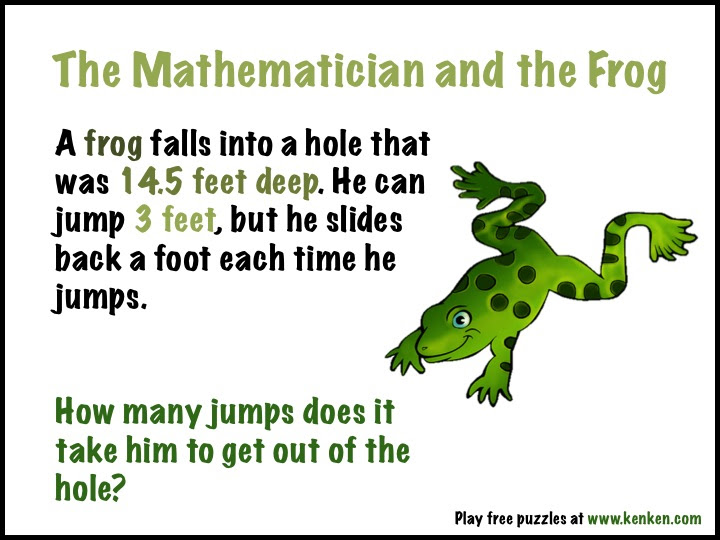
A website sponsored by KenKen frequently posts fun puzzles for students and teachers of mathematics. Visitors to the website can select puzzles by type and by level of difficulty. There is even an opportunity that is free for teachers to participate in a group titled "KENKEN in the Classroom".
You’ll note that at times (probably for the sake of brevity) the problem statements may lack some precision. For example, the frog problem could cause confusion since when we think of frogs jumping, we normally think about how FAR they can jump. It would be helpful to point out that in this problem we are interested in how HIGH a frog can jump.
In your Primarily Math classes, you discussed the CCSS Standards for Mathematical Practice. One practice is "Attend to Precision." Those of you who have had Dr. Jim Lewis as an instructor in Primarily Math likely recall his rule that "The student should never have to read your mind to answer a math problem. The language [in the frog problem] is not precise enough and clearly violates this rule. Should the student read someone's mind to know that the reference is to how high the frog jumps or that the frog slides back down?”
Addressing issues like this with students can help them learn the importance of clarifying details and assumptions. After a class discussion you might revise the problem so it says something like, "The frog can jump 3 feet high, but he slides back down a foot before is able to jump again."
See if you can help the frog get out of his hole, then check out more puzzles at http://www.kenken.com.